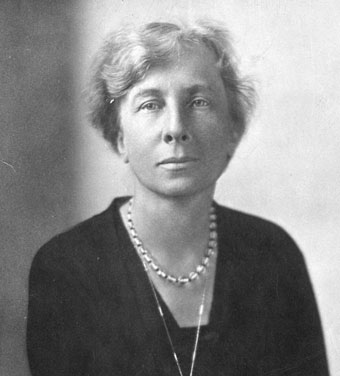
Lillian Moller was born May 24th 1878 in Oakland,
Ca. She was tutored at home until she
was nine, at which time she entered the Oakland Public Schools and then the
University of California at Berkeley, graduating in 1900 with a B.Lit. degree. She was the first woman to be chosen as the
university’s commencement speaker.
In 1903, after earning a master’s degree in English from
Berkeley, she departed for Europe. On a stopover in Boston she met Frank B.
Gilbreth who was a cousin of her traveling companion. He was one of New
England’s leading building contractors.
Lillian and Frank were married on October 1904 when she became a partner
in his rapidly expanding business.
Lillian had twelve children.
With the assistance of her mother-in-law and hired help, she managed to
earn a Ph.D. in psychology from Brown University in 1915. One of her children, Frank, Jr., wrote the
bestselling book about their childhood, Cheaper by the Dozen. Lillian and Frank opened Gilbreth, Inc., in
Montclair, New Jersey. Their company
pioneered the application of motion study in industry, consulting with major
companies around the company.
Frank died in 1924 and Lillian continued their work alone
and put all of here eleven surviving children through college. From 1935 to 1948 she was professor of
management at Purdue University where she established a time and motion study
lab. She became a consultant at the
Institute of Rehabilitation Medicine at New York University Medical center
where developed a model kitchen adapted to the needs of the physically
challenged.
She continued to do research into her seventies and lectured
and published books well into her eighties. She received more than twenty
honorary degrees and numerous awards. A
fellowship in here memory was established by the Society of Women Engineers as
a tribute to her lifelong encouragement of women to become engineers.



